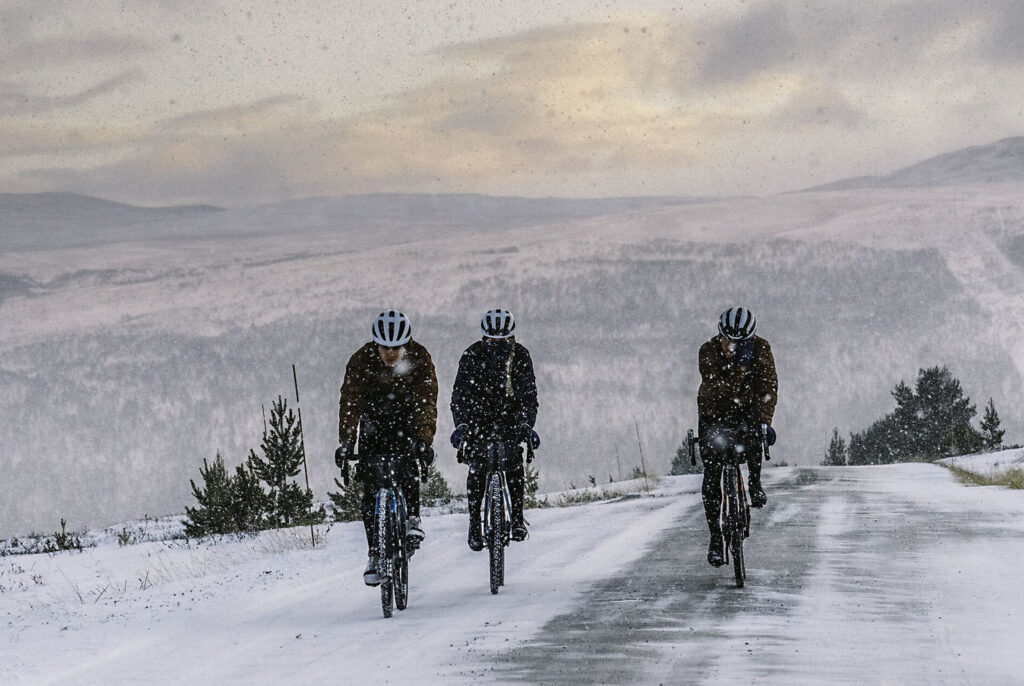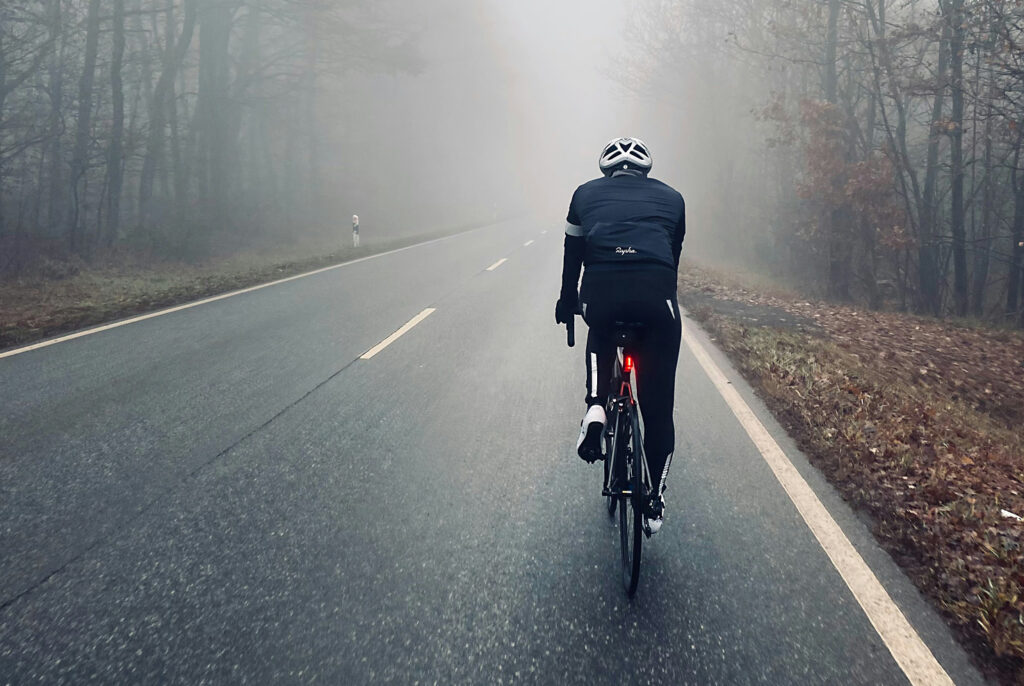For many cyclists, the arrival of winter means fewer rides and more time indoors. But for the determined few, winter is not a time to slow down—it’s a chance to embrace the challenges of the colder months and enjoy the quiet beauty of snow-covered roads. With the right preparation, gear, and mindset, winter cycling can become one of the most rewarding experiences, offering not only physical benefits but also the opportunity to strengthen mental resilience. In this guide, we’ll dive into everything you need to know about cycling through winter, from essential gear to staying motivated when the temperature drops.

As the festive season approaches, many cyclists set themselves one final challenge to round off the year—the Rapha Festive 500. This annual challenge dares cyclists to ride 500 kilometers between Christmas Eve and New Year’s Eve, no matter the weather conditions. It’s a test of endurance, grit, and determination. If you’ve ever wanted to push yourself during the holidays, we’ll show you how to prepare and make the most of winter cycling, whether you’re tackling the Festive 500 or just looking to stay on two wheels during the colder months.
Why Cycling in Winter?
Winter cycling brings both physical and mental benefits. You improve your endurance and stay fit while others might be hibernating. Training in cold, challenging conditions can also help build your willpower and mental resilience. There’s nothing quite like coming back from a frosty ride and celebrating your triumph over the elements.
Here are even more reasons:
- Health: Regular exercise strengthens the immune system and helps ward off colds.
- Unique Nature Experience: Snow-covered landscapes offer a special kind of magic. Whether it’s frost-covered fields or quiet, snow-draped forests, winter brings beautiful moments you won’t see in any other season.
- Less Traffic: Many cyclists switch to indoor alternatives during the winter. If you ride outdoors, you’ll often have the roads to yourself.
The Right Gear – Your Key to Winter Cycling
Staying warm and comfortable while maintaining control of your bike is essential for winter cycling. It’s not just about battling the cold but also ensuring safety and enjoying your ride.
1. Clothing
- Layer Up (The Onion Principle): Layering is key to adjusting to changing temperatures. Start with a moisture-wicking base layer, add an insulating mid-layer, and finish with a wind- and water-resistant outer layer.
- Thermal Gear: Specialized thermal jerseys and bibs are designed to keep you warm, even in freezing conditions.
- Shoes and Overshoes: Cold feet can quickly ruin a ride. Thermal shoes or insulated overshoes are essential for keeping your feet warm and dry.
- Gloves and Hat: Insulated winter gloves with a windproof membrane and a thin hat or headband under your helmet will keep your hands and ears protected from the cold.
- Reflective Clothing: Winter days are short, and visibility is often poor. High-visibility and reflective gear are critical for staying safe on the roads.

2. Your Bike and Setup
- Winter Tires: Tires with deeper tread or even studded tires offer much better traction on snow and ice. Consider using wider tires at lower pressure for increased surface contact and better stability.
- Fenders: Fenders will help keep water, slush, and mud from splashing up onto you, making for a more comfortable ride.
- Lighting: Winter means many rides will happen in low-light conditions. Make sure your bike lights are bright enough, and you’re visible from all sides.
- Brakes and Drivetrain: Cold and wet conditions can be tough on your bike’s mechanics. Hydraulic disc brakes are a great choice for consistent braking performance in wet or icy weather.
3. Bike Maintenance
Winter cycling can expose your bike to salt, grime, and moisture. Regularly cleaning and lubricating your chain and moving parts is essential to prevent wear and tear. Pay extra attention to your brake pads, as they wear out faster when riding on dirty, wet roads.
Safety Tips for Winter Cycling
Winter brings rapidly changing road conditions, so being extra cautious and riding defensively is key.
- Ride More Defensively: Snow and ice require more careful riding. Reduce your speed and avoid sudden movements or hard braking to prevent slipping.
- Brake Gently and Early: Especially on icy surfaces, brake smoothly and early to avoid losing traction.
- Watch for Shaded Spots: Roads that get sun during the day might thaw, while shaded areas can stay icy. These are often the trickiest spots to navigate.
- Boost Your Visibility: Wear bright, reflective gear and use powerful front and rear lights to make sure other road users can see you clearly.
- Prepare for Weather Changes: Winter weather can be unpredictable. A sudden snowstorm or ice patches can appear quickly. Always check the weather before heading out and be prepared for changes.

Motivation for Cycling in Winter Months
It’s normal for motivation to wane when it’s cold and dark outside. But this is where you can build mental strength and discipline. Here are some tricks to keep you excited about winter riding:
- Set Realistic Goals: Plan shorter rides that don’t take you too far from home, so you can always turn back if needed.
- Ride with Others: Winter rides are more fun and motivating with friends. Together, you can push each other and enjoy the challenge.
- Mix in Indoor Training: On days when it’s too extreme outside, a turbo trainer or smart trainer can be a good way to maintain fitness.
- Reward Yourself Post-Ride: A hot shower and a warm cup of tea or hot chocolate after a winter ride can feel like the best reward ever.
Fazit
Cycling in winter has its own unique charm and brings challenges that are well worth the effort. With the right gear, a cautious approach, and a strong mindset, you can enjoy riding your bike year-round and make the most of every ride. Don’t let cold weather stop you – it’s a chance to take your cycling passion to a new level.
So, bundle up, get on your bike, and explore the wintry world in a whole new way! Your adventure is waiting – even in the cold.


